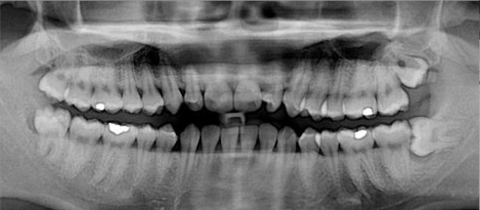On March 11, 2020, the World Health Organization announced that COVID-19 could be “characterized as a pandemic,” meaning that this new disease was now spreading all over the world. One day, we will be able to declare this pandemic over. The questions are: what needs to be in place to get us there and how will we know when we have reached this destination?
The upshot of vaccination
It has been estimated that between 60 and 70% of the population needs to be immune to the new coronavirus for it to stop spreading easily. We can reach this threshold the callous way, by refusing to adapt and letting the virus mow down the more vulnerable members of our community, or we can harness technology to boost our immunity, i.e. through vaccination. Given the amount of money and focus invested in solving this problem, it is entirely plausible that we will have approved vaccines for wide use in 2021. But a vaccine does not signal the end of the pandemic. It is unlikely to eradicate the virus from the globe, something a vaccine has only managed to do in humans once in the case of smallpox (which had no animal outside of humans in which it could naturally survive).
Some vaccines are very good at preparing our immune system to encounter the real deal; others, much less so. This measurement is known as efficacy, and the higher the efficacy of a COVID vaccine, the fewer people need to receive it in order for us to reach this 60-70% community immunity threshold. Indeed, not everyone will get the vaccine and not everyone will want it. The anti-vaccination lobby will continue to pump out disinformation against its safety. Many people will be suspicious of the short time frame in which the vaccine was produced. Vaccine hesitancy is frequently assessed in polls and it fluctuates over time. We should expect some amount of resistance to a brand-new vaccine regardless of what the safety data actually tell us.
Moreover, there is a gap between the approval of a vaccine and the manufacturing of every dose necessary to immunize every willing member of the world’s population, which is why vaccination will have to be done in phases. Because of their high risk to transmit or to die from the disease, it is likely that the following groups will be prioritized: older adults, healthcare and essential workers, frontline staff, and people whose risk is elevated because of where they live, work or because of how difficult it is for them to access health care.
Additional hurdles will include the sobering fact that many vaccines being tested right now require dry ice or bulky -80 degree Celsius freezers to preserve them before they are administered; that distribution into hard-to-access areas and conflict zones will be challenging; and that deals between powerful nations and pharmaceutical companies mean that two-thirds of the world’s population is unlikely to have access to a vaccine until at least 2022, according to Oxfam.
Inevitably, different countries will have different vaccines with different efficacies. Some vaccines will require two shots a few weeks apart, which will create a complication. If I develop a fever after getting the first shot, am I likely to line up to receive the second one? But even if I get both of these shots, I will not know if I am personally now immune to the coronavirus. That’s because testing for antibodies against the virus--proof that the vaccine worked for me--is unlikely to be done systematically. Therefore, from my personal perspective, it will be like going to meet a torrential downpour with an umbrella I am given, but where a small subset of these umbrellas have big holes in them and I’m unable to find out ahead of time. Better to take the umbrella even if there is a small chance it won’t protect me than to head out with no umbrella at all. And with a functioning umbrella, I can also help shield from the rain people who can’t hold onto an umbrella of their own.
Vaccines will help but they will not be sufficient. This means that hygienic measures are not going away any time soon.
Skin in the game
“No way I’m ever shaking your hand,” Dr. Yoni Freedhoff, associate professor of family medicine at the University of Ottawa, wrote to me. I asked many doctors and health scientists how they thought the pandemic would end. Dr. Freedhoff also anticipates that mask wearing will remain more common even after we’re all immunized.
“We need a huge shift in our approach to personal responsibility for illness,” Dr. Clay Jones, a paediatrician at Newton-Wellesley Hospital in Massachusetts, told me. “I will never go back to being mask-less seeing patients.” Paediatric admissions for common viral infections have been dramatically reduced this year. “We should want to continue to protect children as much as possible,” he concluded, “and simply wearing masks, even if not to the degree we are now, can do that.”
From a public health standpoint, we can only hope that our culture in the Western world can echo the mindset of Eastern Asian countries, where wearing a mask when sick is much more common. A further culture shift would be for more people to work from home if they can and for sick employees to be allowed to stay home to prevent the spread of infection.
And for life to gradually return to normal, there is yet another gizmo in the toolbox.
A pregnancy test for COVID
Imagine lining up for a restaurant and being asked to spit into a vial. Fifteen minutes later, the host returns and tells you your test was negative for COVID. You may now be seated.
This is the promise of rapid testing: diagnostic assays that, while not necessarily as accurate as current laboratory testing, can be done quickly and on location in places like restaurants, airports, the doctor’s office and schools. We can even imagine an affordable home test kit consisting of strips that would tell you if you are, pardon the phrasing, “pregnant with COVID.”
For these rapid tests to be useful in guiding us out of this pandemic, they need to be supported by an advanced test-trace-isolate infrastructure, which unfortunately for most countries has yet to materialize. Innovation may also bring us biological preventative measures, like a nasal spray that blocks the virus from entering our cells, which if proven safe, effective, and affordable could be yet another contributing factor to the turning of the tide.
The combination of worthy vaccines, sustained hygienic measures, and widespread rapid testing should move us to the final stretch of the pandemic.
The end is up to us
We have come to expect uncertainty from weather forecasts, and there’s no way to avoid it with pandemic forecasts. Complex systems contain a multitude of variables. Being wrong about one of them can dramatically shift the outcome. The biggest unknown right now is how long immunity to COVID lasts, both following illness but also when we have been vaccinated against it. We will need to wait and find out.
Eventually, we hope to see smaller and smaller numbers of cases each month, followed by fewer hospitalizations and deaths from the disease. We will see more travel bubbles, like the one for the Atlantic provinces, where movement is permitted because local outbreaks are few and far in between. When social restrictions are relaxed as a consequence, these numbers will need to remain low. They will stay down because enough of us will now be immune to the virus, either from having had the disease or from having been vaccinated, and also because of mask wearing, physical distancing and competent tracing and quarantining as necessary. Ambers will glow, local pockets of viral transmission, but skillful political leadership and swift action, if present, will smother them quickly. People who do experience severe illness may eventually benefit from better antiviral therapies. Although we have not been particularly successful in the past when it comes to antivirals aimed at respiratory diseases, never has more money been thrown at the problem.
If we go through an entire winter season with minimal cases, no surge in hospitalizations and deaths, and fairly relaxed social restrictions, the worst of it will probably be behind us. The SARS-CoV-2 virus, however, is unlikely to disappear. It will find it harder to spread from person to person, as most jumps will be halted by the other person’s immune response. Essentially, the virus will be an international traveller desperate for a port of entry. Because its genetic code has to be copied each time new virus particles are made, and because the copying process is never perfect, the virus will continue to mutate. Like many viruses we have experience with, these mutations may end up dulling its lethality by accident, until it becomes a much less problematic infection for us. At this point the virus will be endemic, meaning regularly seen in our population, just like the flu and common cold viruses.
It is disturbing to learn that plague, an infection caused by the Yersinia pestis bacterium and which killed tens of millions of people in the Middle Ages, is still with us today and is endemic in a few countries of the world. The infamous flu strain responsible for the pandemic of 1918, inaccurately referred to as the “Spanish flu”, also became endemic, as did many other flu strains that caused severe outbreaks over the years. More recent infections, however, don’t provide much clarity when it comes to foreseeing the end of COVID-19. The Middle Eastern Respiratory Syndrome was not as highly transmissible between humans. The swine flu of 2009 was not as severe. As for SARS, most infectious patients displayed clear signs of the illness and could be rapidly isolated. COVID-19 is much sneakier, with a significant number of contagious people showing no symptom. The clearest course to reduce its impact on the world is the above combination of strategies, patience, and a hope for it to mutate to a reduced severity.
In the midst of this very slow burn and an increasing toll on our mental health, people will decide when the pandemic has ended for them. It may sound peculiar, but we are already doing it when it comes to influenza. Each year in Canada, we estimate that influenza and pneumonia (a common consequence of severe flu) cause 12,200 hospitalizations and 3,500 deaths. Worldwide, the number of deaths is between 290,000 and 650,000. Before COVID, the measures we took to minimize the deaths of these very real people were minimal. Only between a third and half of all Canadians get their flu shot each year. Mask wearing was minimal, and the ability to work from home when sick was severely limited, often seen as unnecessary or flat-out impossible.
Together, we will have to decide how many deaths from COVID moving forward do we, as a society, consider acceptable. This threshold will fall into the background and we will come to forget about it. Some of us will never overlook our experiences in 2020 and will continue to wear masks in risky situations. Others will gladly attend sporting events and concerts indoors, their noses and mouths fully exposed.
When the proper measures are in place, the pandemic will end one mind at a time.
Take-home message:
- The COVID-19 pandemic is likely to end with a combination of effective vaccines, prolonged hygienic measure such as mask-wearing and physical distancing, and rapid testing
- The coronavirus could end up mutating in a way that it causes fewer cases of severe illness and death and becomes comparable to the flu
- The end of the pandemic will also be psychological and will be different for each one of us based on the amount of risk we are willing to tolerate







